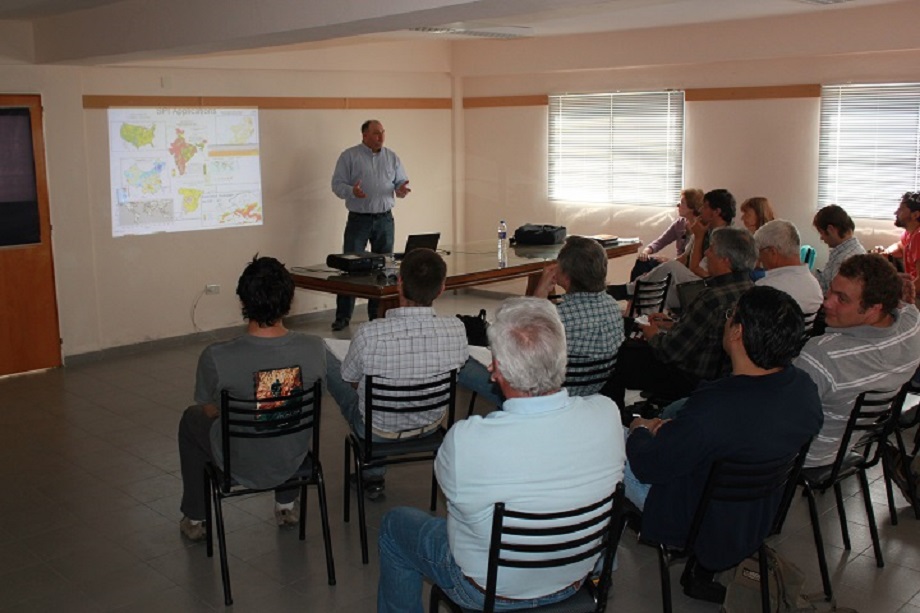
The NASA Water Resources Program Strategy and Investigator Meeting is set to take place from Sept. 24-26 at the Nebraska Champions Club. The meeting is hosted jointly by the National Drought Mitigation Center (NDMC) and the Center for Advanced Land Management Information Technologies (CALMIT).
"We have advised this NASA program on strategies and critical information needs of the global drought monitoring community in areas such as water, agricultural and food security," said Brian Wardlow, UNL associate professor and CALMIT director. "NASA has used this feedback to help guide the development of several research and applications priorities with the NASA Water Resources program to maximize the use of their satellite observations and other data assets to support drought monitoring."
About 50 members of the NASA Applied Sciences Water Resources community from across the country are at the meeting, which is being held at UNL for the first time.
Faculty members in attendance are from universities including Columbia University, University of Maryland, John Hopkins University, University of California-Santa Barbara, University of California-Irvine and University of Florida. Scientists from federal agencies such as NASA, NOAA, USDA and USGS are also attending.
"This meeting will bring in the who's who of current experts and researchers in the field from around the United States," said Mark Svoboda, geoscientist. "It offers up a first-hand view of what's current and state-of-the-art in the satellite operations field. It brings great visibility to UNL."
NASA's invitation to UNL to host the meeting is the direct result of several years of successful collaborations among the NASA Applied Water Resources Program, NDMC and CALMIT, Svoboda said.
The meeting's primary objective is to review progress on applications of remote sensing for water resources monitoring and management, with a primary focus on drought monitoring and quantification of drought impacts.
"The meeting is critically important for identifying NASA program research and applications priorities in the area of water related to agriculture, drought, water resource management and sustainability issues," Wardlow said.
Having led the effort to bring the meeting to UNL, Wardlow and Svoboda are viewing the event as a chance to strengthen and build future research collaborations with everyone involved — from NASA to researchers at other universities to program managers at federal agencies.
"This is another opportunity to leave a positive impression on who we are and what we do at UNL, both with NASA and with their partners," Svoboda said.
— Mekita Rivas, Natural Resources
More details at: http://go.unl.edu/oegh